Bruce Bagemihlv - Biological Exuberance - Animal Homosexuality and Natural Diversity
Здесь есть возможность читать онлайн «Bruce Bagemihlv - Biological Exuberance - Animal Homosexuality and Natural Diversity» весь текст электронной книги совершенно бесплатно (целиком полную версию без сокращений). В некоторых случаях можно слушать аудио, скачать через торрент в формате fb2 и присутствует краткое содержание. Жанр: Природа и животные, на английском языке. Описание произведения, (предисловие) а так же отзывы посетителей доступны на портале библиотеки ЛибКат.
- Название:Biological Exuberance: Animal Homosexuality and Natural Diversity
- Автор:
- Жанр:
- Год:неизвестен
- ISBN:нет данных
- Рейтинг книги:4 / 5. Голосов: 1
-
Избранное:Добавить в избранное
- Отзывы:
-
Ваша оценка:
- 80
- 1
- 2
- 3
- 4
- 5
Biological Exuberance: Animal Homosexuality and Natural Diversity: краткое содержание, описание и аннотация
Предлагаем к чтению аннотацию, описание, краткое содержание или предисловие (зависит от того, что написал сам автор книги «Biological Exuberance: Animal Homosexuality and Natural Diversity»). Если вы не нашли необходимую информацию о книге — напишите в комментариях, мы постараемся отыскать её.
Biological Exuberance: Animal Homosexuality and Natural Diversity — читать онлайн бесплатно полную книгу (весь текст) целиком
Ниже представлен текст книги, разбитый по страницам. Система сохранения места последней прочитанной страницы, позволяет с удобством читать онлайн бесплатно книгу «Biological Exuberance: Animal Homosexuality and Natural Diversity», без необходимости каждый раз заново искать на чём Вы остановились. Поставьте закладку, и сможете в любой момент перейти на страницу, на которой закончили чтение.
Интервал:
Закладка:
Animals sometimes exploit specific spatial and environmental elements in their courtship activities as well. Special display courts are used in same-sex (and opposite-sex) interactions in many species, including the “drumming logs” of male Ruffed Grouse, the elaborate architectural creations of Regent Bowerbirds, and the traditional group or communal display areas known as leks found in animals as diverse as Kob antelopes, Long-tailed Hermit Hummingbirds, and Ruffs. In other species, dramatic chases that may cover great distances are part of same-sex interactions: aerial pursuits occur in Greenshanks, Golden Plovers, Bank Swallows, and Chaffinches; ground chases take place during courtships in Mule Deer, Cheetahs, Whiptail Wallabies, and Redshanks; aquatic pursuits occur in Australian Shelducks; while Black-billed Magpies combine both ground and aerial pursuit in their courtship behavior known as chase-hopping. Perhaps most amazing of all are the light-related displays of a number of bird species, which are designed to utilize specific properties of sunlight or other luminosity in the bird’s environment. Guianan Cock-of-the-Rock, for example, position their leks and courtship displays in special “light environments” that maximize the visibility of the birds through a sophisticated interaction of the ambient light, the reflectance and coloration of the bird’s own (brilliant orange) plumage, and the forest geometry in which they are located. Anna’s Hummingbirds precisely orient the trajectory of their stunning aerial climbs and dives to face into the sun, thereby showing off their iridescent plumage to its best. As a male swoops toward the object of his attentions (either male or female), he resembles a brilliant glowing ember that grows in intensity as he gets closer. To advertise their presence on the lek, male Buff-breasted Sandpipers perform a wing-raising display that exploits the midnight sun of their arctic habitat. Seen from a distance, the brilliant white underwings of each bird flash momentarily against the dull tundra background, reflecting the weak late-night sunlight and thereby creating a luminous semaphore that attracts other birds, both male and female, to their territories. 6
In addition to spectacular visual displays, homosexual courtship—like the corresponding heterosexual behaviors—can involve a veritable cacophony of different sounds. Female Kob antelopes whistle, male Gorillas pant, female Rufous Rat Kangaroos growl, male Blackbuck antelopes bark, female Koalas bellow, male Ocellated Antbirds carol, female Squirrel Monkeys purr, and male Lions moan and hum. The “snap-hiss” ceremonial calls of Black-crowned Night Herons, the croaking of male Moose, “geckering” and “snirking” of female Red Foxes, the chirp-squeaks of male West Indian Manatees, “yip-purr” calls of Hammerheads, the yelping and babble-singing of Black-billed Magpies, “lip-smacking” in several Macaque species, the humming call of Pukeko, “stutters” and “chirps” of male Cheetahs, the “vacuum-slurping” of male Caribou, and pulsive scream-calls in Bowhead Whales are just some of the vocalizations heard during same-sex courtship and related interactions. Sometimes pairs of birds execute synchronized vocal displays, as in the duets of rolling calls performed by Greylag gander pairs, or the precisely syncopated “moo” calling of pairs of male Calfbirds. In a few cases, courtship activities involve nonvocal sounds or sounds produced in unusual ways. Male Guianan Cock-of-the-Rock, Ruffed Grouse, Victoria’s Riflebirds, and Red Bishop Birds, for example, make distinctive whistling, drumming, or clapping sounds by beating or fanning their wings (which in some cases have specially modified, sound-producing feathers), while male Anna’s Hummingbirds produce a shrill popping sound as a result of air passing through their tail feathers during display flights. Some of the most extraordinary sounds during same-sex courtship are made by aquatic animals: Walruses generate eerily metallic “bell” sounds by striking special throat pouches with their flippers and castanet-like “knocks” by chattering their teeth, while Musk Ducks have an entire repertoire of courtship splashing sounds made by kicking their feet during displays variously named the paddle-kick, plonk-kick, and whistle-kick. Finally, some Dolphins appear to engage in a sort of sonic “foreplay”: male Atlantic Spotted Dolphins have been observed stimulating their partner’s genitals with pulsed sound waves, using a type of vocalization known as a genital buzz.
In most species the same courtship behaviors are used in both homosexual and heterosexual interactions. Sometimes, however, same-sex courtship involves only a subset of the movements and behaviors found in opposite-sex displays. For example, when Canada Geese court each other homosexually, they perform a neckdipping ritual also found in heterosexual courtships, but do not adopt the special posture that males and females use after mating. In animals like the Western Gull or Kob antelope, individuals vary as to how many courtship behaviors they use in same-sex interactions. Some exhibit only one or two of the typical courtship postures and movements, while others go through the entire elaborate courtship sequence. Perhaps most interesting are those creatures that have a special courtship pattern found only in homosexual interactions. Male Ostriches, for example, perform a unique “pirouette dance” only when courting other males, while female Rhesus Macaques engage in courtship games such as “hide-and-seek” that are unique to lesbian interactions.
Kisses, Wuzzles, and Necking: Affectionate Behaviors
Many animals of the same sex touch each other in ways that are not overtly sexual (they do not involve direct contact of the genitals) but that do nevertheless have clear sexual or erotic overtones. These are referred to as affectionate activities and are found in nearly a quarter of the animals in which some form of homosexual activity occurs. Although many of these behaviors (grooming, embracing, play-fighting) can occur in other contexts, their erotic nature in a same-sex context is usually obvious: the two animals may be visibly sexually aroused, the behavior may directly precede or follow homosexual copulation or courtship, or the affectionate activity may occur in a same-sex pair-bond.
One type of affectionate activity is simple grooming or rubbing. Male Lions “head-rub” and roll around with each other before having sex together; Bats such as Gray-headed Flying Foxes and Vampire Bats engage in erotic same-sex grooming and licking; male Mountain Sheep rub their horns and faces on other males, sometimes becoming sexually aroused; Whales and Dolphins stroke and rub each other with their flippers or tail flukes, as well as rub bodies together; while numerous primates such as Apes, Macaques, and Baboons frequently caress and groom each other in both sexual and nonsexual contexts. A few birds such as Humboldt Penguins, Pukeko, Black-billed Magpies, and Parrots also indulge in preening—the avian equivalent of grooming—in their homosexual interactions or pair-bonds.
Some animals also “kiss” each other: male African Elephants, female Rhesus Macaques, male West Indian Manatees and Walruses, female Hoary Marmots, and male Mountain Zebras (among others) all touch mouths, noses, or muzzles during their homosexual encounters. Even some birds, such as Black-billed Magpies, engage in mutual beak-nibbling or “billing” as part of same-sex courtship. In primates, kissing (in both homosexual and heterosexual contexts) can bear a startling resemblance to the corresponding human activity: a number of species such as Squirrel Monkeys and Common Chimpanzees engage in full mouth-to-mouth contact, while male Bonobos kiss each other with “passionate” openmouthed kisses with considerable mutual tongue stimulation.
Читать дальшеИнтервал:
Закладка:
Похожие книги на «Biological Exuberance: Animal Homosexuality and Natural Diversity»
Представляем Вашему вниманию похожие книги на «Biological Exuberance: Animal Homosexuality and Natural Diversity» списком для выбора. Мы отобрали схожую по названию и смыслу литературу в надежде предоставить читателям больше вариантов отыскать новые, интересные, ещё непрочитанные произведения.
Обсуждение, отзывы о книге «Biological Exuberance: Animal Homosexuality and Natural Diversity» и просто собственные мнения читателей. Оставьте ваши комментарии, напишите, что Вы думаете о произведении, его смысле или главных героях. Укажите что конкретно понравилось, а что нет, и почему Вы так считаете.
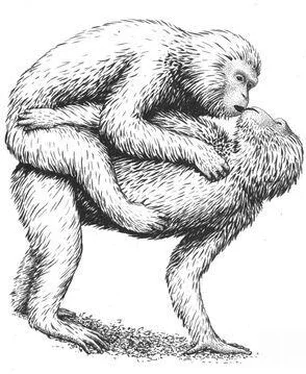

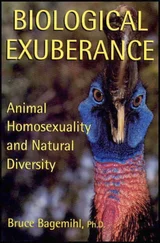
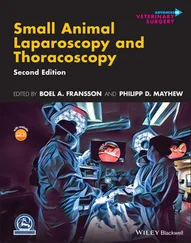
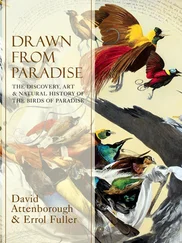

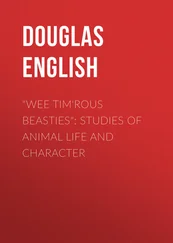
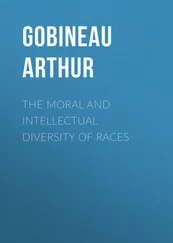
![Various - Birds and Nature, Vol. 10 No. 1 [June 1901]](/books/745231/various-birds-and-nature-vol-10-no-1-june-1901-thumb.webp)
![Various - Birds and Nature Vol. 10 No. 5 [December 1901]](/books/745236/various-birds-and-nature-vol-10-no-5-december-1-thumb.webp)

![Various - Birds and Nature, Vol. 12 No. 5 [December 1902]](/books/745517/various-birds-and-nature-vol-12-no-5-december-thumb.webp)
![Various - Birds and Nature Vol. 11 No. 2 [February 1902]](/books/745533/various-birds-and-nature-vol-11-no-2-february-1-thumb.webp)